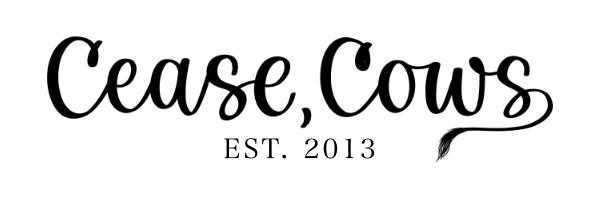The best microfiction is small in word count only. In Spinning to Mars, Meg Pokrass offers readers a collection of condensed gems filled with insight and wit, her stories lingering in the mind long after you’ve finished reading them. The multi-talented Pokrass excels as an editor, too, as proven by her work on the Best Microfictions series.
Purchase your copy here.

Pokrass recently shared her thoughts with Cease, Cows.
Chuck Augello: Your new collection, Spinning to Mars, is comprised of over sixty micros. What attracted you toward microfiction rather than longer stories or poems?
Meg Pokrass: The stories themselves chose their shape. When I set out to write each of these pieces, there was no plan to make them tiny… or to make a book of them! This seems to be how most of my solo collections happen. I’m not sure I’m writing a book until it is written, and I realize that a group of stories belong together.
CA: How do you define microfiction? Is it different from flash fiction?
MP: Microfiction, when it works, creates a complex experience of collaboration between reader and writer, an experience that feels private and shared. These tiny pieces tend to have a prismatic quality. Each reader will have a different understanding of the same piece—and they all are correct.
CA: In Spinning to Mars, a sense of longing inhabits many of the pieces. Was this theme intentional?
MP: My themes are unconscious to me. I write the way it feels to be inside my life and I project this feeling into the lives of characters.
CA: One of my favorite pieces in Spinning to Mars is “Hammertoe.” Can you share anything about how you came to write it?
MP: Thank you so much. That story is CNF. My mother passed away many years ago, and I feel very close to her and miss her. This jolts me when I feel the sharp pain in my hammertoe, which looks exactly like hers did. She used to complain about it and I never took it very seriously. This feels symbolic of something else, some part of my relationship with my mother that I can’t quite put into words but was able to do so with that strange little story.
CA: Microfiction often appears to the reader as having been written quickly in a single burst of inspiration. Is that true, or do most of the stories evolve over time through multiple revisions?
MP: A combination. A few pop out just as they are—whole and ready. Others were reworked like crazy, revised obsessively over. For me, microfiction doesn’t come out in a burst of inspiration. I have created ways to lure the stories out. I give myself creative prompts to unlock these pieces.
CA: You’ve also published two novellas-in-flash, “Here, Where We Live” and “The Loss Detector.” How would you describe a novella-in-flash?
MP: A novella-in-flash is essentially a miniature novel written in flash chapters. Apart from that, trying to state exactly what a flash novella is would be comparable to stating exactly what a poem or novel is. It can’t be done to anyone’s satisfaction.
CA: You are also one of the editors for the Best Microfiction series. How did you come into that role?
MP: I conceived of the Best Microfiction anthology series in 2018. I was thinking about how amazing it would be to have a yearly best-of series for the tiniest stories published in lit journals each year. Otherwise, these stories tend to disappear. When work is exceptional, it should be read and reread and loved.
I was fortunate, in 2018, to have had 2 micros included in the Norton Anthology New Micro: Exceptionally Short Fiction (W. W. Norton & Co., 2018). Reading that wonderful anthology, edited by James Thomas and Robert Scotellaro, I became inspired to create and edit something like this on a yearly basis.
I am thrilled that it has bloomed. I am grateful to my co-editor, Gary Fincke, and to Pelekinesis Press for giving the series such a wonderful home.
CA: Describe the process of creating a “Best Of” anthology. How do you find the selections and what goes into the decision-making process?
MP: The stories are nominated by magazine editors. We also have contributing editors out reading/scouting for pieces that may have slipped through the cracks. I’d say 2/3 of the selections came from magazine editors’ nominations, and the other 1/3 from findings by our scouts.
CA: What advice would you give to someone who has written longer works but wants to try writing microfiction?
MP: Read microfiction. Naturally, I’d suggest the best-of samplers to take in a wide variety of voices and styles. There is the Best Microfiction anthology series, New Micro (W.W. Norton, 2018), Nothing Short Of: Selected Tales from 100 Word Story (Outpost 19). There are countless free online literary magazines, including your wonderful Cease, Cows, who publish great microfiction regularly. I believe the best way to learn how to write it is to read it, and study it, and hold what you love very close to your heart. Carry it around with you everywhere.
–
Chuck Augello (Contributing Editor) lives in New Jersey with his wife, dog, two cats, and several cows that refuse to cease. His work has appeared in One Story, Juked, Hobart, SmokeLong Quarterly, and other fine places. He publishes The Daily Vonnegut and contributes interviews to The Review Review.
Meg Pokrass’ flash fiction has been widely published and anthologized, most recently in 2 Norton Anthologies of flash fiction, The Best Small Fictions (2018, 2019), Best British & Irish Flash Fiction (2019, 2020), Wigleaf Top 50, Flash Nonfiction Funny (edited by Dinty Moore), Flash Fiction Funny, Short Circuits: Aphorisms, Fragments, and Literary Anomalies, Nothing Short of 100, and many hundreds of literary journals and international anthologies of flash. Her seventh collection of flash fiction, Spinning to Mars won the Blue Light Book Award in 2020. Recent writing has appeared in Washington Square Review, Electric Literature, Tupelo Quarterly, Waxwing, Five Points, American Journal of Poetry, Plume Poetry, Jellyfish Review, Wigleaf, and Monkeybicycle. Meg serves as Co-Founder of San Francisco’s Flash Fiction Collective Reading Series, Festival Curator for Flash Fiction Festival, U.K, Founding Editor of New Flash Fiction Review, and Founding Co-Editor of the Best Microfiction anthology series. She resides in Northern England.

